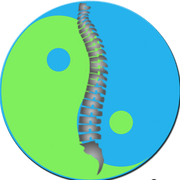Should You Use a Heat or Ice Pack for Back Pain?

Back pain is often managed with at-home care. Whether the discomfort is temporary or chronic, both ice and heat packs can help. Each of these has a different purpose and can be effective between visits to the chiropractor. Use the following guide to ensure you get the most from this pain-relief measure.
When to Use an Ice Pack
Muscle Soreness
You may develop muscle soreness after working out. The tissue damage and inflammation can be a constant source of pain and can be managed with an ice pack. Cold temperatures constrict blood vessels in the muscle tissue and will reduce swelling. They may also help numb the pain.
For ideal results, wrap the ice pack in a towel or cloth so that it doesn’t directly touch your skin. Apply the pack for 15-20 minutes, remove it for the same interval, and repeat. The sooner you do this after exercising, the more effectively you’ll reduce pain and the faster you’ll heal.
Acute Back Pain
Cold therapy is ideal if you’re dealing with acute pain like a muscle strain. You’ll reduce initial inflammation and enjoy the same benefits as icing for muscle soreness. Follow the same method.
Sciatica
Sciatica pain occurs when pressure from a back injury stimulates the sciatic nerve that runs from the lower back down your hips, buttocks, legs, and feet. Reactions can be sharp and sudden, and you can use an ice pack to numb the pain.
When to Use a Heat Pack
Chronic Back Pain
 If you deal with back pain daily due to long-term muscle damage and other injuries, a heat pack is your optimal resource. These open blood vessels and increase blood flow to the damaged areas.
If you deal with back pain daily due to long-term muscle damage and other injuries, a heat pack is your optimal resource. These open blood vessels and increase blood flow to the damaged areas.
The hot temperatures relax muscle fibers to reduce spasms and stiffness. The increased blood flow also delivers oxygen to the injury site to promote healing. You can use a heating pad or an adhesive heating pack on an injured area for several hours so you enjoy extended relief.
Acute Back Pain
You should use a heat pack for acute back pain only after using an ice pack. The cold temperatures minimize pain and the extent of the injury. The heating pack then improves muscle flexibility and circulation. You can use the heat pack for several hours each day until the muscle tissue has healed. This method can also be effective in treating sciatica.
In many cases, patients can alternate between heating and cooling treatments to reduce pain and promote healing. Generally, alternate in 24-hour intervals. Remember that neither of these is a substitute for chiropractic care; they’re simply management tools, and you should still see a professional.
If back pain is a constant issue, contact Forest Park Chiropractic & Acupuncture. This Cincinnati, OH, practice offers a number of rehabilitative services. Dr. Reed Moeller has welcomed patients since 1989 and offers chiropractic care, acupuncture, nutritional guidance, and more. Explore treatments online, and call (513) 742-0880 to schedule an exam.
About the Business
Have a question? Ask the experts!
Send your question

